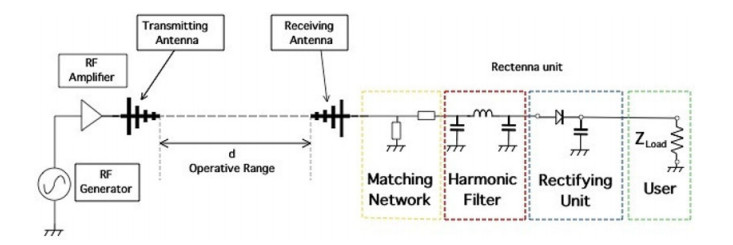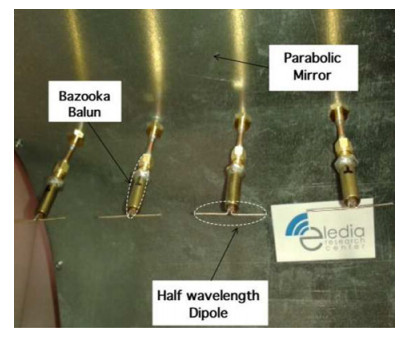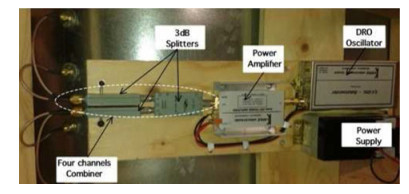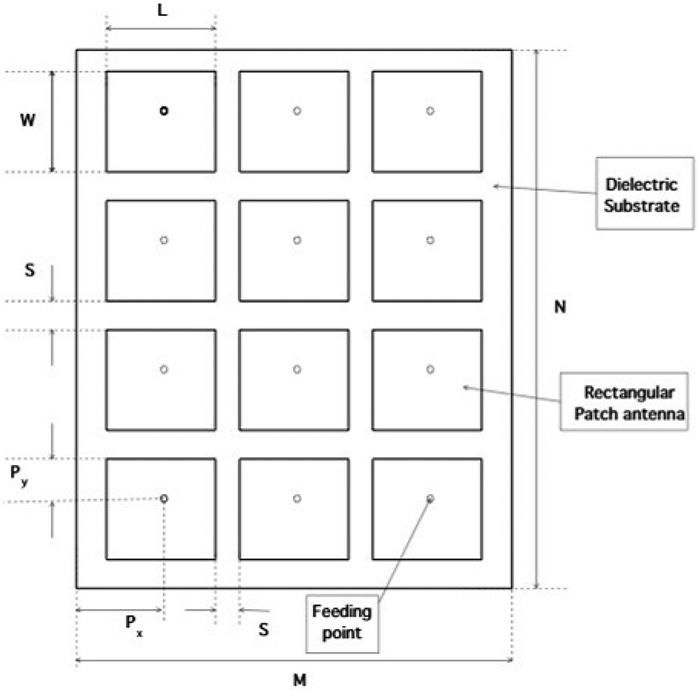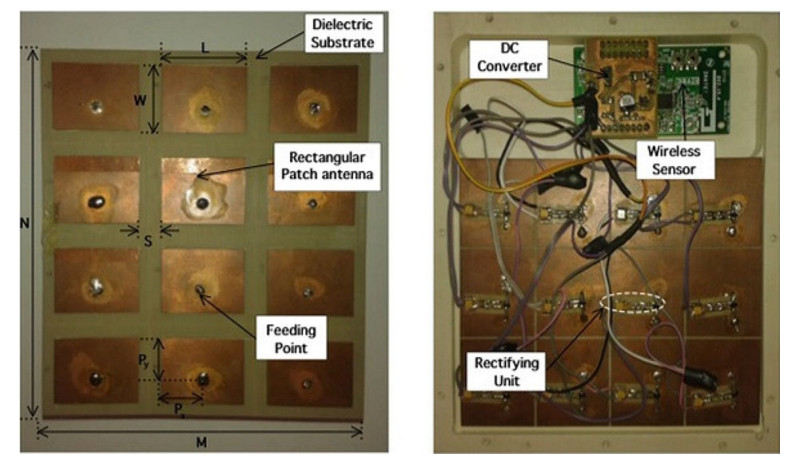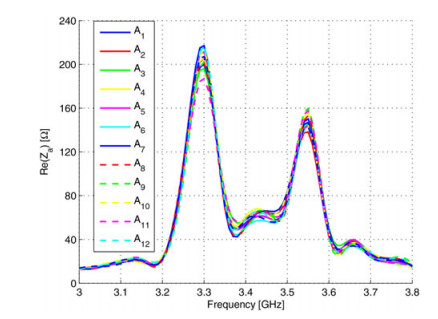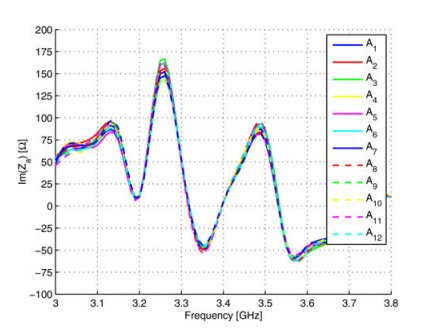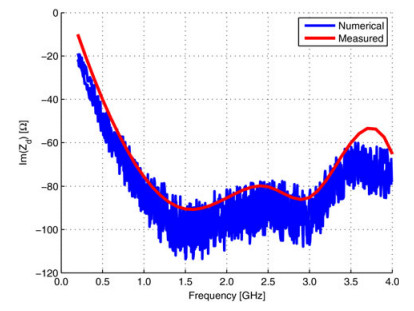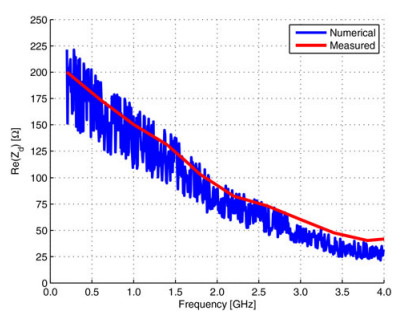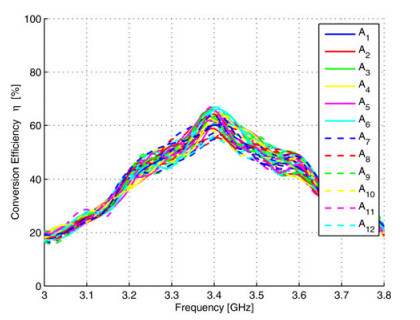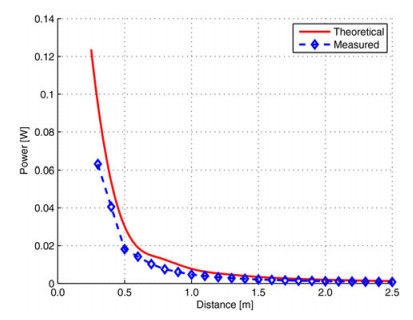Design of a WPT system for the powering of wireless sensor nodes: theoretical guidelines and experimental validation
-
Department of Information Engineering and Computer Science (DISI) University of Trento, ELEDIA Research Center, Via Sommarive 9, Trento 38123, Italy. Phone: +39 0461 28 2063
More Information
-
Author Bio:
 M. Donelli
M. Donelli received his M.Sc. degree in Electronic Engineering and Ph.D. degree in Space Science and Engineering from the University of Genoa, Genoa, Italy, in 1998 and 2003, respectively. He is currently an Associate Professor of electromagnetic field at the Department of Information and Communication Technology, University of Trento, Trento, Italy, and a member of the ELEDIA Research Center. He is the author/coauthor of over 160 peer-reviewed papers in international journals and conferences. His current research interests include microwave devices and systems design, EM inverse scattering, adaptive antenna synthesis, optimization techniques for microwave imaging, wave propagation in superconducting materials, and urban environments.
 P. Rocca
P. Rocca received the M.S. degree (summa cum laude) in Telecommunications Engineering and the Ph.D. degree in Information and Communication Technology from the University of Trento, Trento, Italy, in 2005 and 2008, respectively. His main interests are in the framework of antenna array synthesis and design, electromagnetic inverse scattering, and optimization techniques for electromagnetics. He is currently an Assistant Professor at the Department of Information Engineering and Computer Science, University of Trento and a member of the ELEDIA Research Center. He is the author/coauthor of over 160 peer-reviewed papers in international journals and conferences. He has been a visiting student at the Pennsylvania State University, Philadelphia, PA, USA and at the University Mediterranea of Reggio Calabria, Reggio, Calabria, Italy. Dr. Rocca has been awarded the best Ph.D. dissertation award by the IEEE Geoscience and Remote Sensing Society and the Italy Section (IEEEGRS Central Italy Chapter). He serves as an Associate Editor of the IEEE ANTENNAS AND WIRELESS PROPAGATION LETTERS.
 F. Viani
F. Viani received the M.S. degree in Telecommunication Engineering from the University of Trento, Trento, Italy, in 2007 and the Ph.D. degree in Information and Communication Technology from the International Doctorate School, University of Trento, Trento, Italy, in 2010. He is currently a member of the ELEDIA Research Center at the Department of Information Engineering and Computer Science (DISI), University of Trento. His main interests are in wireless sensor networks, antenna synthesis and design, industrial application of wireless power transmission technologies, and electromagnetic inverse scattering methodologies
-
Corresponding author:
M. Donelli Email: massimo.donelli@disi.unitn.it
-
Abstract
This work presents the design of a system for wireless power transmission based on a compact rectenna array able to supply low-power electronic devices such as wireless sensors. The receiving section is realized with an array of 12 rectangular patch antennas. Each elements of the array is connected with a suitable harmonic filter and a rectifying circuit by means of a coaxial feeding point. The transmitting section is realized with a one-dimensional prime focus parabolic reflector antenna, with a linear feeder composed by four dipole antennas. The rectenna array, the harmonic filter, the rectifying circuit of the receivers, and the transmitting section were optimized to reach the maximum operative range and efficiency, in term of power transfer. A system prototype has been designed, optimized, fabricated, and experimentally assessed. In particular, a prototype operating in the S band and able to provide a supply power of about 50 mW serves as proof-of-concept. Moreover, theoretical guidelines for the design of wireless power transmission are provided. The obtained experimental results are quite promising and demonstrated the capabilities of wireless power transmission systems as alternative power supply sources.
-
About this article
Cite this article
Donelli M, Rocca P, Viani F. 2016. Design of a WPT system for the powering of wireless sensor nodes: theoretical guidelines and experimental validation. Wireless Power Transfer 3(1): 15-23 doi: 10.1017/wpt.2015.20
|
Donelli M, Rocca P, Viani F. 2016. Design of a WPT system for the powering of wireless sensor nodes: theoretical guidelines and experimental validation. Wireless Power Transfer 3(1): 15-23 doi: 10.1017/wpt.2015.20
|









 M. Donelli received his M.Sc. degree in Electronic Engineering and Ph.D. degree in Space Science and Engineering from the University of Genoa, Genoa, Italy, in 1998 and 2003, respectively. He is currently an Associate Professor of electromagnetic field at the Department of Information and Communication Technology, University of Trento, Trento, Italy, and a member of the ELEDIA Research Center. He is the author/coauthor of over 160 peer-reviewed papers in international journals and conferences. His current research interests include microwave devices and systems design, EM inverse scattering, adaptive antenna synthesis, optimization techniques for microwave imaging, wave propagation in superconducting materials, and urban environments.
M. Donelli received his M.Sc. degree in Electronic Engineering and Ph.D. degree in Space Science and Engineering from the University of Genoa, Genoa, Italy, in 1998 and 2003, respectively. He is currently an Associate Professor of electromagnetic field at the Department of Information and Communication Technology, University of Trento, Trento, Italy, and a member of the ELEDIA Research Center. He is the author/coauthor of over 160 peer-reviewed papers in international journals and conferences. His current research interests include microwave devices and systems design, EM inverse scattering, adaptive antenna synthesis, optimization techniques for microwave imaging, wave propagation in superconducting materials, and urban environments.  P. Rocca received the M.S. degree (summa cum laude) in Telecommunications Engineering and the Ph.D. degree in Information and Communication Technology from the University of Trento, Trento, Italy, in 2005 and 2008, respectively. His main interests are in the framework of antenna array synthesis and design, electromagnetic inverse scattering, and optimization techniques for electromagnetics. He is currently an Assistant Professor at the Department of Information Engineering and Computer Science, University of Trento and a member of the ELEDIA Research Center. He is the author/coauthor of over 160 peer-reviewed papers in international journals and conferences. He has been a visiting student at the Pennsylvania State University, Philadelphia, PA, USA and at the University Mediterranea of Reggio Calabria, Reggio, Calabria, Italy. Dr. Rocca has been awarded the best Ph.D. dissertation award by the IEEE Geoscience and Remote Sensing Society and the Italy Section (IEEEGRS Central Italy Chapter). He serves as an Associate Editor of the IEEE ANTENNAS AND WIRELESS PROPAGATION LETTERS.
P. Rocca received the M.S. degree (summa cum laude) in Telecommunications Engineering and the Ph.D. degree in Information and Communication Technology from the University of Trento, Trento, Italy, in 2005 and 2008, respectively. His main interests are in the framework of antenna array synthesis and design, electromagnetic inverse scattering, and optimization techniques for electromagnetics. He is currently an Assistant Professor at the Department of Information Engineering and Computer Science, University of Trento and a member of the ELEDIA Research Center. He is the author/coauthor of over 160 peer-reviewed papers in international journals and conferences. He has been a visiting student at the Pennsylvania State University, Philadelphia, PA, USA and at the University Mediterranea of Reggio Calabria, Reggio, Calabria, Italy. Dr. Rocca has been awarded the best Ph.D. dissertation award by the IEEE Geoscience and Remote Sensing Society and the Italy Section (IEEEGRS Central Italy Chapter). He serves as an Associate Editor of the IEEE ANTENNAS AND WIRELESS PROPAGATION LETTERS.  F. Viani received the M.S. degree in Telecommunication Engineering from the University of Trento, Trento, Italy, in 2007 and the Ph.D. degree in Information and Communication Technology from the International Doctorate School, University of Trento, Trento, Italy, in 2010. He is currently a member of the ELEDIA Research Center at the Department of Information Engineering and Computer Science (DISI), University of Trento. His main interests are in wireless sensor networks, antenna synthesis and design, industrial application of wireless power transmission technologies, and electromagnetic inverse scattering methodologies
F. Viani received the M.S. degree in Telecommunication Engineering from the University of Trento, Trento, Italy, in 2007 and the Ph.D. degree in Information and Communication Technology from the International Doctorate School, University of Trento, Trento, Italy, in 2010. He is currently a member of the ELEDIA Research Center at the Department of Information Engineering and Computer Science (DISI), University of Trento. His main interests are in wireless sensor networks, antenna synthesis and design, industrial application of wireless power transmission technologies, and electromagnetic inverse scattering methodologies 


